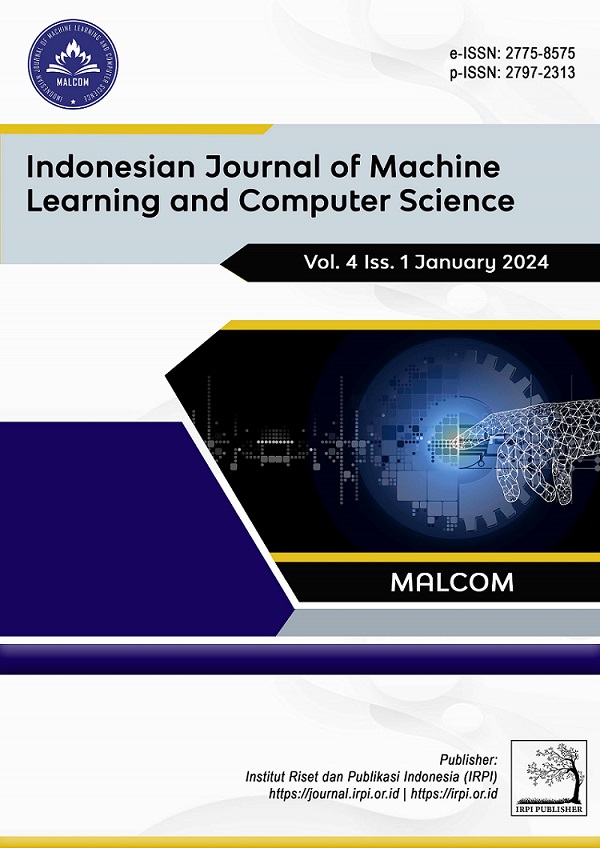Tekno Ekonomi Vapour Recovery Unit (VRU) di SPBU Tanggerang
Techno Economics Vapor Recovery Unit (VRU) at SPBU of Tanggerang
DOI:
https://doi.org/10.57152/malcom.v4i1.1036Keywords:
Emisi, Keekonomian, Konsentrasi Uap, Stasiun Pengisian Bahan Bakar Umum, Vapor Recovery UnitAbstract
Salah satu fasilitas yang digunakan untuk mendistribusikan bahan bakar minyak kepada masyarakat adalah Stasiun Pengisian Bahan Bakar Umum. Kegiatan operasional di Stasiun Pengisian Bahan Bakar Umum mempunyai potensi bahaya yang dapat menimbulkan kecelakaan kerja, seperti uap bahan bakar yang dapat menimbulkan kebakaran dan ledakan (rentang ledakan pada konsentrasi 1,4% s/d 7,6% v/v), dan senyawa organik yang mudah menguap yang dapat menimbulkan gangguan kesehatan. masalah bagi pekerja. Tujuan penelitian ini untuk mengetahui emisi dan uap yang terdeteksi di lingkungan SPBU serta mengetahui kelayakan ekonomi pemasangan vapor recovery unit. Penelitian ini dilakukan terhadap 2 Stasiun Pengisian Bahan Bakar Umum, yaitu: 1) pengukuran emisi dan konsentrasi uap menggunakan gas tester di lokasi, 2) analisis kelayakan ekonomi dengan menggunakan data yang diperoleh. Hasil dari penelitian ini adalah tidak ditemukan uap dan emisi lainnya pada saat vapor recovery unit beroperasi serta analisis keekonomian vapor recovery unit yang terpasang di Stasiun Pengisian Bahan Bakar Umum Swasta di Karang Tengah, Tangerang berkapasitas desain penjualan 3.000 kiloliter per tahun mempunyai break even point pada saat tahun ke-8 dan dibandingkan dengan Stasiun Pengisian Bahan Bakar Umum Badan usaha Milik Negara dengan kapasitas desain penjualan yaitu 8.000 kiloliter per tahun akan mendapat break even point pada tahun ke-3.
Downloads
References
Johnson, K. (2013). Volatile Organic Compounds. Report to the Legislature, Wisconsin Groundwater Coordinating Council
NFPA,"National Fire Alarm and Signaling Code",The National Fire Protection Association.2022
ESDM,"Keselamatan SPBU Pedoman Teknis dan Pembelajaran dari Kejadian",Direktorat Jendral Minyak dan Gas Bumi.2021
Wallace, J. (2016) Flammable and Combustible Liquids: Storage and Handling (Rev 9-2013). Workplace Safety, Inc.
Singh, AK., Tomer, N. and Jain, CL,”Concentration of Volatile Organic Compounds (VOCs) in Urban Atmosphere of National Capital Delhi, India”, Int. J. Pharmaceut, 159-165, 2012
Atabi, F., Moattar, F., Mansouri, N., Alesheikh, A.A. and Mirzahosseini, S.A.H, “Assessment of variations in benzene concentration produced from vehicles and gas stations in Tehran using GIS”, Int. J. Environ. Sci. Technol, Jan. 2013
Franco, M., Chairez, I., Poznyak, T. and Poznyak, A,”BTEX decomposition by ozone in gaseous phase”, J. Environ. Manage, 95 (Supplement), S55-S60, Mar. 2012
Lerner Colman J.E, Sanchez E.Y, Sambeth J.E, Porta A.A,"Characterization and health risk assessment of VOCs in occupationalenvironments in Buenos Aires, Argentina",2012
Kevin Fournier, Emmanuel Baumont, Philippe Glorennec, Nathalie Bonvallot,” Relative toxicity for indoor semi volatile organic compounds based on neuronal death. Toxicology Letters”,, 279, pp.33-42, Ags. 2017
Lee K., Boufadel M., Chen B., Foght J., Hodson P., Swanson S., Venosa A. Expert panel report on the behaviour and ecological impacts of crude oil released into aqueous environments, Royal Society of Canada, Ottawa, ON. ISBN 978-1-928140-02-3, Nov. 2015
Tianle Shou, “A Literature Review on The Net Present Value (NPV) Valuation Method”, pp. 827-828, 2022
TCEQ Regulatory Guidance, Program Support and Environmental Assitance Division, “Gasoline Vapor Recovery”,2019 (https://www.tceq.texas.gov/downloads/assistance/publications/rg-475j.pdf)
Eisaei, H.R., Ahmadi Dehrashid, S.S., Khani, M.R. and Hashemi, S.M, “Assessment and control of VOCs emitted from gas stations in Tehran, Iran”, April. 2015[2].
Saha PK and Rahman M, Vapor Recovery from Condensate Storage Tanks Using Gas Ejector, Technology Journal of Chemical Engineering, IEB; Vol. ChE, 27 (1): 37-41.2012
Jae Hyuck Kim, Seok Hyeon Jung, Hyung-Seok Kim,Tae-Hyuk Jang and Kyung Seun Yoo, “Evaluation of Air Quality with and without Vapor Recovery System of Stage II”, Ags. 2013
Nattadon Pannucharoenwong, Totsaphon Chabuanoi and Chatchai Benjapiyaporn, Snunkhaem Echaroj,”The Optimal Design of Prototype to Replace the Vapor Recovery Unit (VRU) Using Computational Fluid Dynamic Analysis”, pp 1623-1627, 2018
V S Vlasenko et al, “Vapor Recovery Unit of Gasoline from the Tanks of Filling Stations with Gas-Dynamic Cooling”, 2020[12]. V S Vlasenko et al, “Vapor Recovery Unit of Gasoline from the Tanks of Filling Stations with Gas-Dynamic Cooling”, 2020
Chahartaghi M., Sheykhi M. Energy, “Environmental and economic evaluations of a CCHP system driven by Stirling engine with helium and hydrogen as working gases”, Energy, Mar. 2019
Ahn H., Freihaut J.D., Rim D.,”Economic feasibility of combined cooling, heating, and power (CCHP) systems considering electricity standby tariffs”, Energy 169, 420–432, Feb. 2019
Pertamina Persero."Safety Data Sheet".2017
Downloads
Published
How to Cite
Issue
Section
License
Copyright © by Author; Published by Institut Riset dan Publikasi Indonesia (IRPI)
This Indonesian Journal of Machine Learning and Computer Science is licensed under a Creative Commons Attribution-ShareAlike 4.0 International License.




















